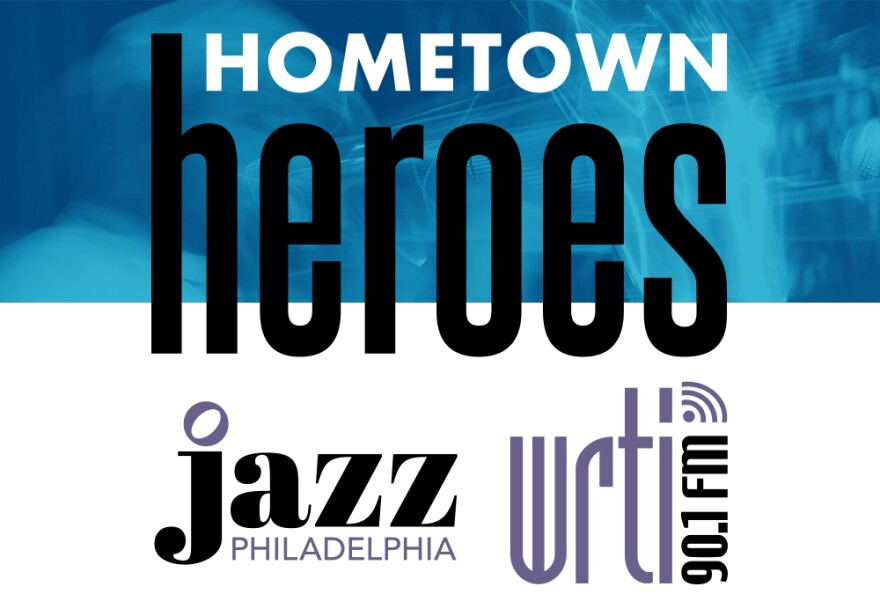For more than half a century, pianist Hasaan Ibn Ali has been the dark matter of Philadelphia jazz?—a mysterious force whose presence has been felt more through his influence on others than via his own work.
In large part, that’s due to the fact that there has been very little to actually hear. Hasaan’s debut album, the prophetically titled The Max Roach Trio Featuring The Legendary Hassan, was released in 1965 and remained the only available document of the pianist’s work well into the next millennium. In lieu of further recordings, Hasaan’s legend continued to grow in the shadows, championed by such peers as saxophonist Odean Pope and leaving its imprint on the artistry of notable Philadelphians including John Coltrane, McCoy Tyner, and Reggie Workman.
That all changed in April 2021, when Omnivore Recordings unearthed Hasaan’s follow-up recording session from the fall of the same year and released it as Metaphysics: The Lost Atlantic Album. Featuring Pope on tenor sax, Art Davis on bass and Kalil Madi on drums, the album brings a welcome set of new original compositions to light, reinforcing Hasaan’s reputation as an ingenious eccentric along the lines of Thelonious Monk and other singular musical imaginations.
“Hasaan was a powerful force that emerged from a generation of local musical explorers,” Pope says. “He was a person that wanted to enrich understanding and was a forerunner in the evolution of jazz music.”

Born William Henry Lankford, Jr. in 1931, Hasaan got his start playing boogie-woogie piano, but upon hearing the bebop pianist Elmo Hope quickly became enamored of the emerging modernist style in jazz. He applied himself to his instrument with vigorous focus, allegedly influencing Coltrane’s own storied practice regimen.
Pope was drawn into that intense study simply by virtue of being a close neighbor of Hasaan’s in North Philly. “We all lived in a sort of maze,” the saxophonist recalls. “I was living three blocks away from Hassan—I was on the 2200 block of Colorado Street and he was on Gratz street in the 2300s. Benny Golson and Sonny Fortune were right around the corner. Lee Morgan was in a nice townhouse in the same neighborhood. And Trane was on 33rd Street. But I was in my parents’ basement practicing one day and somebody tapped on the window.”
Apparently lured by the sound of Pope’s tenor, Hasaan invited the saxophonist to his practice sessions beginning the following morning. “The next morning I was at Hasaan Ibn Ali’s house at ten minutes to nine,” Pope continues.
“His father came to the door and let me in and at nine o’clock sharp, Hasaan came down from the second floor with nothing but a robe on. He went directly to the piano and started practicing. Ten minutes later, his father brought his breakfast to the piano. After he ate his breakfast I took my instrument out and we started practicing from 9:30 up until about noon. Then Hasaan’s father brought his lunch to the piano, he ate his lunch and we played a couple of games of chess. Then we practiced again from 1:00 until around 5:00 in the afternoon. Then his mother, who was a domestic worker, came in and gave him a couple of packs of Viceroy cigarettes and a couple of dollars.”
Following this uniquely regimented routine, the two would perform small private shows at local houses for, Pope describes, “a couple of dollars and some cake and tea.” But the challenging nature of Hasaan’s music, which Metaphysics co-producer Alan Sukoenig calls “a logical extension of Monk with technique like Bud Powell,” combined with his at times unpredictable behavior, resulted in a struggle to find gigs on the local club scene.
“I was getting gigs until I started practicing with him,” Pope says. “After I started getting involved in the evolution of his music, I stopped getting gigs. When Hasaan would play, all the saxophone players would get off the bandstand because they couldn’t follow his very modern changes. So we’d play all day and then go to these houses each night. That was our job for the next few years.”
Max Roach ultimately championed Hasaan to Atlantic Records, leading to the recording of his debut and the audience-courting decision to give the iconic drummer top billing. But shortly after recording what should have been his sophomore release, Hasaan was jailed on narcotics charges and the label shelved the album. It was presumed lost in a 1978 warehouse fire, until Porter persuaded Omnivore producer Patrick Milligan to delve into the Atlantic vaults, where a copy was discovered.
Hasaan’s fate was far more tragic. He continued to be plagued by personal demons, combined with the frustration of Atlantic’s refusal to release the quartet recordings, and he became a recluse in his parents’ home. A 1972 fire took the house, his mother’s life, and his stockpile of music, a disaster from which Hasaan never fully recovered. He suffered a stroke and passed away in relative obscurity in 1981.
“Hasaan was said to have influenced almost all the great musicians who came out of Philadelphia,” muses Sukoenig, who befriended Hasaan while a student at the University of Pennsylvania during the early 1960s. “On the other hand, he was sort of an outcast. It’s hard to reconcile those two ideas. But in my experience, Hasaan was a warm person, quite open and fun to be with, but he was an offbeat person who might have mystified other musicians.”

